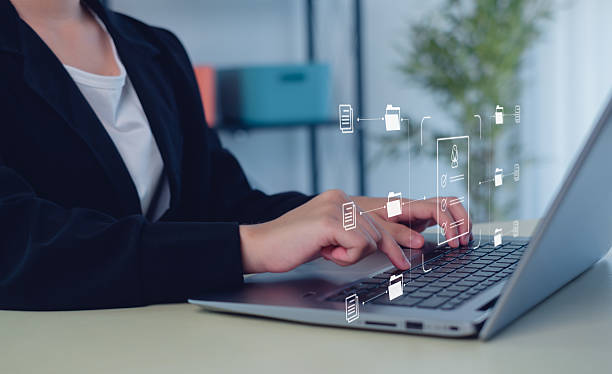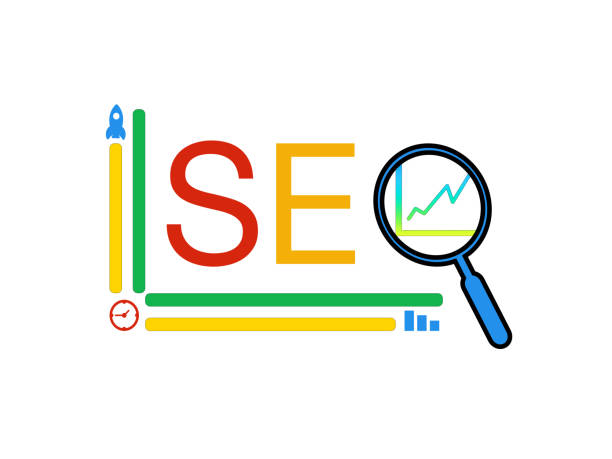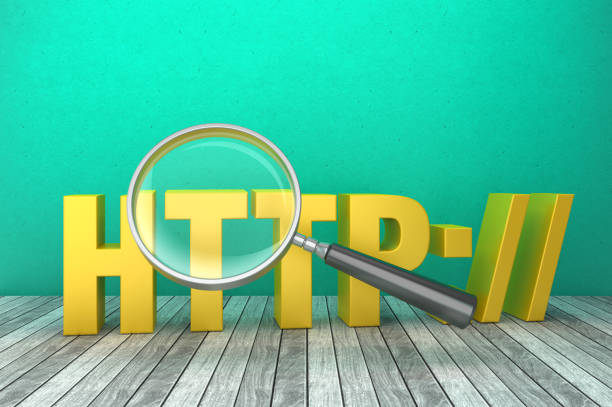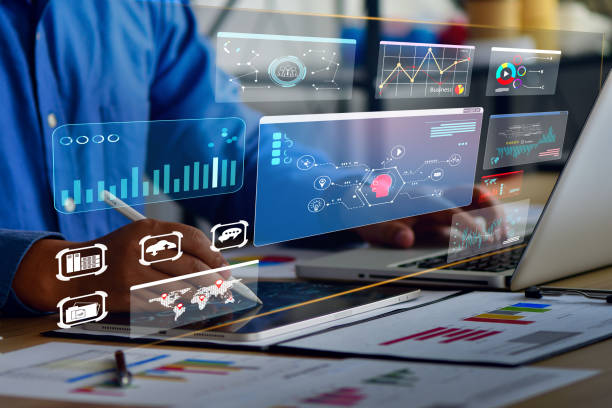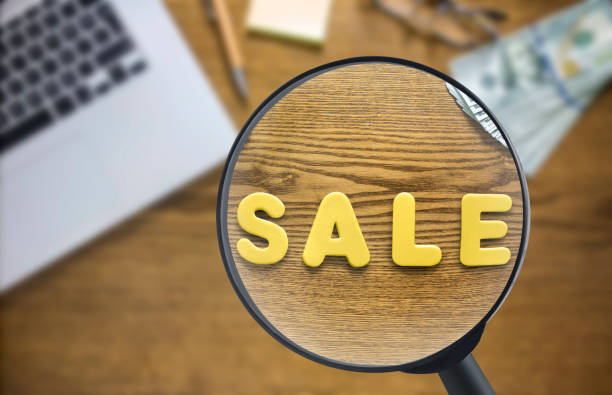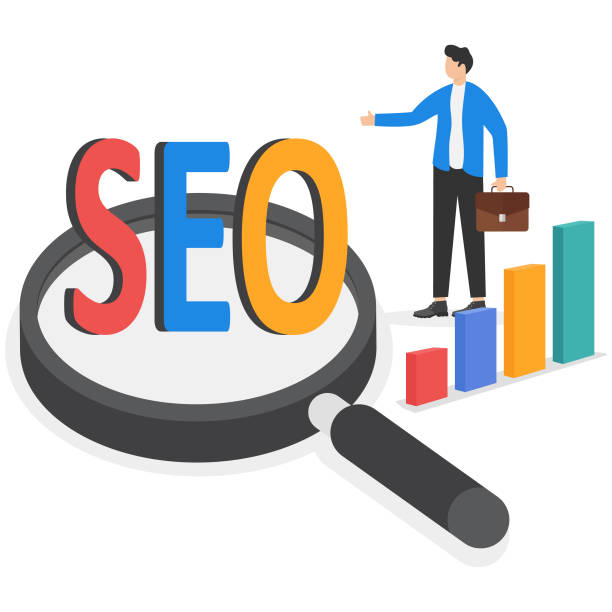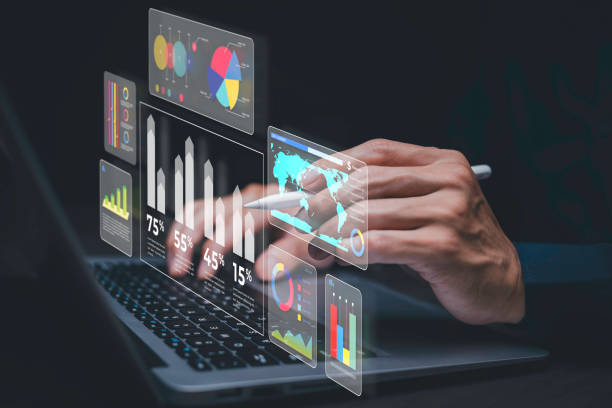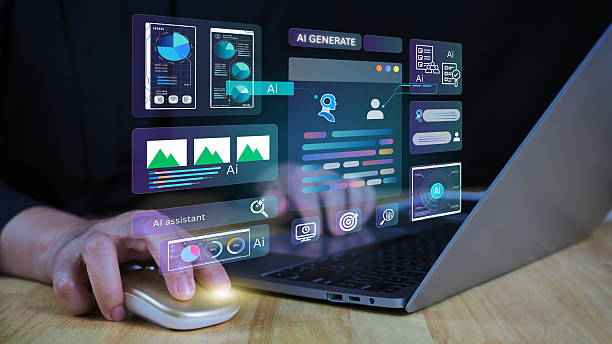What is On-Page SEO and Why Does It Matter?
On-page SEO, also known as On-Page SEO, refers to the set of actions you take within your website to improve your site’s ranking in Google search results and other search engines.
These actions include optimizing content, site structure, title tags, meta descriptions, and other HTML elements.
Why is on-page SEO important? Because it helps search engines understand what your website is about and whether its content is relevant to users.
A website that is well optimized for on-page SEO is more likely to rank high in search results and attract more organic traffic.
In fact, on-page SEO is one of the main foundations of a successful SEO strategy.
In other words, on-page SEO tells search engines how relevant your website’s content is to the terms users are searching for.
On-page SEO optimization means that your website is seen higher in search results and, therefore, more traffic enters your site.
This traffic can turn into potential customers and ultimately increase your sales and revenue.
One of the most important aspects of on-page SEO is content optimization.
Your content should be engaging, informative, and relevant to your target keywords.
It should also have a proper structure and be easy to read.
Internal linking also plays an important role in on-page SEO.
By linking different pages of your website to each other, you help search engines better understand the structure of your site.
Also, using appropriate HTML tags helps improve the readability and understanding of content by search engines.
Using heading tags (#H1, #H2, #H3) helps to better structure the content and shows search engines what topics different sections of the page are about.
Image optimization is also an important part of on-page SEO.
By using appropriate file names, Alt tags, and image compression, you can help improve page loading speed and better understand the content of images by search engines.
Are you tired of your online store not generating as much revenue as its potential? Rasaweb, a specialist in designing professional online stores, solves this problem forever!
✅ Increase sales rates and revenue
✅ High loading speed and unparalleled user experience
⚡ Get a free consultation on online store website design
Keyword Research; The Cornerstone of On-Page SEO
Keyword research is the process of identifying the words and phrases that users use to search for information on search engines.
This process is the cornerstone of any successful on-page SEO strategy.
Without keyword research, you don’t know what users are looking for and you can’t optimize your content to meet their needs.
The first step in keyword research is brainstorming.
Think about what your business is about and what problems it solves for customers.
Then, create a list of words and phrases that you think your customers use to search for information related to your business.
After creating this list, you need to analyze your keywords.
You can do this by using various keyword research tools such as Ahrefs, Moz Keyword Explorer and Ubersuggest.
These tools provide you with information about search volume, competition, and related keywords.
The goal of keyword research is to find words that have high search volume and relatively low competition.
These keywords will help you attract more organic traffic.
After finding the right keywords, you need to use them in your content.
You can do this by placing keywords in the page title, meta description, subheadings, and body text.
Of course, you should be careful not to overuse your keywords, as this can lead to your website being penalized by Google.
Remember that your ultimate goal is to create valuable and informative content for users.
The use of keywords should be in a way that helps to improve the readability and understanding of the content.
Optimizing Page Title (Title Tag) and Meta Description
The title tag and meta description are two important HTML elements that appear in Google search results.
The title tag is the clickable title that appears at the top of each search result.
The meta description is a short summary of the page content that appears below the page title.
Optimizing the title tag and meta description is very important for on-page SEO because it helps users and search engines understand what your page is about and whether it is relevant to their search.
The title tag should be engaging, informative, and relevant to your target keywords.
The length of the title tag should not exceed 60 characters, as Google usually shortens longer titles.
The meta description should also be engaging, informative, and relevant to your target keywords.
The length of the meta description should not exceed 160 characters.
In fact, the meta description is an opportunity to persuade users to click on your link in search results.
The title tag and meta description can be placed using the HTML tags <title> and <meta name="description"> in the <head> section of the page.
For example:
<head><title>Best On-Page SEO Guide for 2024</title><meta name="description" content="Learn how to optimize your website for on-page SEO and attract more organic traffic."></head>
Below is a table to show the differences between title and meta description and the importance of each:
| Feature | Page Title (Title Tag) | Meta Description |
|---|---|---|
| Display Location | Browser tab and search engine results page (SERP) | Search engine results page (SERP) |
| Main Goal | Determine page topic and attract clicks | Provide a summary of content and attract clicks |
| Optimization | Includes relevant, engaging, and concise keywords | Includes keywords, accurate summary, persuasive |
| Recommended Length | Maximum 60 characters | Maximum 160 characters |
Click here to preview your posts with PRO themes ››
Content Optimization; The King of On-Page SEO
Content is the king of on-page SEO.
Quality and relevant content is the most important factor in ranking your website in search results.
Google is looking for websites that provide valuable content for users.
Your content should be engaging, informative, reliable, and relevant to your target keywords.
It should also have a proper structure and be easy to read.
To optimize content, you must first identify your target keywords.
Then, create your content around these keywords.
Use your keywords in the page title, meta description, subheadings, and body text.
Of course, you should be careful not to overuse your keywords.
Remember that your ultimate goal is to create valuable and informative content for users.
The use of keywords should be in a way that helps to improve the readability and understanding of the content.
In addition to keywords, you should also pay attention to the structure of your content.
Your content should be divided into small and digestible sections.
Use subheadings, lists, and images to improve readability.
Also, you should update your content regularly.
Old and outdated content has less value for Google.
By updating your content, you show Google that your website is active and up-to-date.
To produce appropriate content for on-page SEO, you should pay attention to the fact that the content of your website should be produced for your target audience.
Your content should solve the problems and questions of your audience.
Your content should be prepared from credible and reliable sources.
Your content should be unique and original.
Avoid copying content from others.
Copying content not only harms your website’s SEO, but can also lead to your website being penalized by Google.
Do you know that a weak company website takes away many opportunities from you every day? Solve this problem forever with professional company website design by Rasaweb!
✅ Create a powerful and reliable image of your brand
✅ Targeted attraction of new customers and increased sales
⚡ [Get a free company website design consultation]
Optimized URL Structure; A Clear Path for Search Engines
An optimized URL structure is another important factor in on-page SEO.
URL (Uniform Resource Locator) is your website address.
Your URL should be short, descriptive, and relevant to your target keywords.
Long and complex URLs are difficult for users and search engines.
Short and descriptive URLs help users and search engines understand what your page is about.
To optimize the URL structure, you should use your target keywords in the URL.
For example, if your page is about “Best On-Page SEO Guide”, your URL should be something like this:
https://example.com/best-on-page-seo-guide
Also, you should avoid using special characters and numbers in your URL.
Special characters and numbers make your URL complex and difficult.
Use a hyphen (-) instead of an underscore (_) to separate words in the URL.
Hyphens are readable for search engines, while spaces are not.
Remember that your URLs should be permanent.
Changing URLs can lead to loss of ranking and traffic.
If you have to change the URL, be sure to use a 301 redirect to redirect users and search engines to the new URL.
In general, the URL structure has a great impact on on-page SEO, and keywords should always be used in URLs.
Using keywords in the URL helps search engines better understand the topic of the page.
On the other hand, a short URL helps users to easily remember the page address.
Also, using hyphens instead of spaces in the URL improves its readability for users and search engines.
Image Optimization; Beyond Visual Appeal
Image optimization is another important aspect of on-page SEO that is often overlooked.
Images can make your content more engaging and informative.
However, large and unoptimized images can slow down your page loading speed and harm your SEO.
To optimize images, you should use an appropriate file name.
The image file name should be descriptive and relevant to your target keywords.
For example, if your image is about “Best On-Page SEO Guide”, the image file name should be something like this:
best-on-page-seo-guide.jpg
Also, you should use Alt tags for your images.
The Alt tag is the text that is displayed to users if the image is not displayed.
The Alt tag should be descriptive and relevant to your target keywords.
The Alt tag helps search engines understand what your image is about.
Image compression is another important factor in image optimization.
Large images slow down your page loading speed.
By compressing images, you can reduce their size without significantly reducing their quality.
Click here to preview your posts with PRO themes ››
Using the appropriate image format is also important.
JPEG and PNG formats are the most common image formats for the web.
JPEG format is suitable for photographic images.
PNG format is suitable for graphic images and icons.
In general, image optimization in on-page SEO means reducing the size of images to increase the page loading speed.
On the other hand, by using alt tags for images, we help search engines understand the topic of the image.
Also, choosing the appropriate image format (JPEG or PNG) affects the quality and size of the image.
Internal Linking; Creating a Strong Network on the Website
Internal linking is the process of linking different pages of your website to each other.
Internal linking helps search engines better understand the structure of your website and gives more credibility to your more important pages.
Internal linking also helps users to easily navigate your website and find the information they are looking for.
For internal linking, you should use appropriate anchor text.
Anchor text is the text that is linked to another page.
The anchor text should be descriptive and relevant to the destination page.
Avoid using general anchor text such as “Click Here”.
For example, if you want to link to the “Best On-Page SEO Guide” page, your anchor text should be something like this:<a href="https://example.com/best-on-page-seo-guide">Best On-Page SEO Guide</a> Internal linking should be done naturally and relevantly.
Avoid over-linking to one page.
Internal linking is one of the important factors in on-page SEO.
With internal linking, you can help improve the ranking and traffic of your website.
Below is a table to show the importance of internal linking in on-page SEO and the factors that affect it:
| Aspect | Importance | Description |
|---|---|---|
| Site Structure | High | Helps search engines understand the structure of the site. |
| Page Authority | High | Transfers authority from authoritative pages to other pages. |
| User Experience | High | Helps users to easily navigate the site. |
| Anchor Text | Medium | Should be descriptive and relevant to the destination page. |
| Number of Links | Medium | Should not be excessive and should be done naturally. |
Page Loading Speed; Key to User Experience and SEO
Page loading speed is one of the most important factors in user experience and SEO.
Users expect web pages to load in a few seconds.
If your page loads slowly, users will leave your website and visit other websites.
Page loading speed is also one of Google’s ranking factors.
Google gives a better ranking to websites that have a high loading speed.
To improve page loading speed, you should optimize your images, use CDN (Content Delivery Network), use cache, and optimize your codes.
Image compression is one of the most effective ways to improve page loading speed.
By compressing images, you can reduce their size without significantly reducing their quality.
CDN is a network of servers that are distributed around the world.
By using CDN, you can deliver the content of your website faster to users who are located in different regions of the world.
Cache is a mechanism that helps you to store the content of your website in the user’s browser.
By using cache, you can improve the page loading speed for users who have previously visited your website.
Code optimization is another way to improve page loading speed.
You should write your codes optimized, organized, and without errors.
Using website speed testing tools helps you to check your page loading speed and identify problems.
In general, loading speed in on-page SEO has a great impact and improves user experience.
High loading speed reduces the bounce rate of users from the site.
Also, Google gives a better ranking to websites that have a high loading speed.
To improve loading speed, optimized images should be used and CDN should be used.
Are you losing your business opportunities because of an old website? With Rasaweb, solve the problem of not attracting potential customers through the website forever!
✅ Attract more high-quality leads
✅ Increase brand credibility in the eyes of customers
⚡ Get a free company website design consultation
Responsive Design; Flawless Display on All Devices
Responsive design is a web design approach that allows your website to automatically adapt to the screen size of different devices (such as desktop computers, laptops, tablets, and smartphones).
Responsive design is very important for user experience and SEO.
Users expect your website to display well on all devices.
If your website is not displayed correctly on mobile devices, users will leave your website and visit other websites.
Google gives a better ranking to websites that have a responsive design.
Google prefers websites that are optimized for mobile devices.
To create a responsive website, you should use CSS Media Queries.
CSS Media Queries allow you to define different styles for different devices.
Also, you should use a responsive CSS framework such as Bootstrap or Foundation.
These frameworks provide you with the tools and components necessary to create a responsive website.
Testing your website on different devices is another important step in creating a responsive website.
You should test your website on different devices with different screen sizes to make sure that it is displayed correctly.
Responsive design is one of the important factors in on-page SEO.
By creating a responsive website, you can help improve the ranking and traffic of your website.
Click here to preview your posts with PRO themes ››
In general, responsive design in on-page SEO means that your website should be displayed correctly on all devices.
Responsive design improves user experience and attracts more users to your website.
Also, Google gives a better ranking to websites that have a responsive design.
Technical SEO; Powerful Infrastructure for On-Page SEO
Technical SEO refers to the set of actions taken to improve the structure and performance of your website so that search engines can easily crawl, index, and rank your website.
Technical SEO provides a powerful infrastructure for on-page SEO.
Without a strong technical infrastructure, your efforts in the field of on-page SEO will not achieve the desired result.
Some of the most important aspects of technical SEO are:
- XML Sitemap: An XML Sitemap is a file that provides search engines with a list of all the pages on your website.
- Robots.txt file: The Robots.txt file tells search engines which pages of your website to crawl and which pages not to crawl.
- SSL Certificate: An SSL certificate guarantees the security of your website and assures users that their information is safe.
- URL Structure: The URL structure of your website should be logical and organized.
- Page Loading Speed: The page loading speed of your website should be high.
- Responsive Design: Your website should display well on all devices.
- Structured Data (Schema Markup): Structured data helps search engines better understand the content of your website.
By improving the technical SEO of your website, you can help search engines better crawl, index, and rank your website.
Technical SEO is one of the important factors in on-page SEO.
By improving the technical SEO of your website, you can help improve the ranking and traffic of your website.
Improving technical SEO means improving on-page SEO.
Frequently Asked Questions
| Question | Answer |
|---|---|
| What is On-Page SEO? | It refers to the set of actions that are done within the website to improve ranking in search engines. |
| Why is On-Page SEO important? | Because it helps search engines better understand the content and structure of your site and improves the user experience. |
| What are the most important elements of On-Page SEO? | Title and meta descriptions, keywords, URL structure, quality content, image optimization, internal linking, and site speed. |
| How to optimize the Title Tag and Meta Description? | The title should include the main and attractive keyword and the meta description should be a persuasive summary of the content with relevant keywords. |
| What is the role of keywords in On-Page SEO? | Keywords make search engines understand what the content of the page is about and should be used naturally and intelligently in the text. |
| How is image optimization done for On-Page SEO? | By compressing the size, using a descriptive file name and filling the Alt tag with relevant descriptions and keywords. |
| What is Internal Linking and what is its application? | It is the connection of different pages of the site to each other. This helps to distribute the authority of pages (Page Authority) and improve the crawl of search engines. |
| What is the importance of site loading speed in On-Page SEO? | High speed improves user experience and is one of the important ranking factors for search engines like Google. |
| What effect does the site being Responsive (Mobile-Friendliness) have on On-Page SEO? | Due to the increase in mobile users, being responsive is necessary to provide a suitable user experience on all devices and the priority of Google’s mobile index. |
| What are the important factors related to content in On-Page SEO? | Originality, quality, comprehensiveness, readability, proper use of headings (H1, H2,…) and regular content updates. |
And other services of Rasa Web advertising agency in the field of advertising
Smart Sales Automation: An effective tool for managing campaigns by optimizing key pages.
Smart Data Analysis: Transform online growth with smart data analysis.
Smart Direct Marketing: Designed for businesses looking to improve SEO ranking through custom programming.
Smart Social Media: Transform customer behavior analysis with smart data analysis.
Smart Marketplace: A professional solution to increase site visits by focusing on accurate audience targeting.
And over hundreds of other services in the field of internet advertising, advertising consulting and organizational solutions
Internet Advertising | Advertising Strategy | Advertorial
Resources
Moz On-Page Optimization
,Ahrefs On-Page SEO Guide
,Yoast On-Page SEO Training
,Semrush On-Page SEO
? Are you looking to upgrade your business in the digital world? Rasaweb Afrin, with expertise in responsive website design, SEO, and content marketing, offers innovative solutions for your online growth and brilliance.
📍 Tehran, Mirdamad Street, next to the Central Bank, South Kazerun Alley, Ramin Alley No. 6

